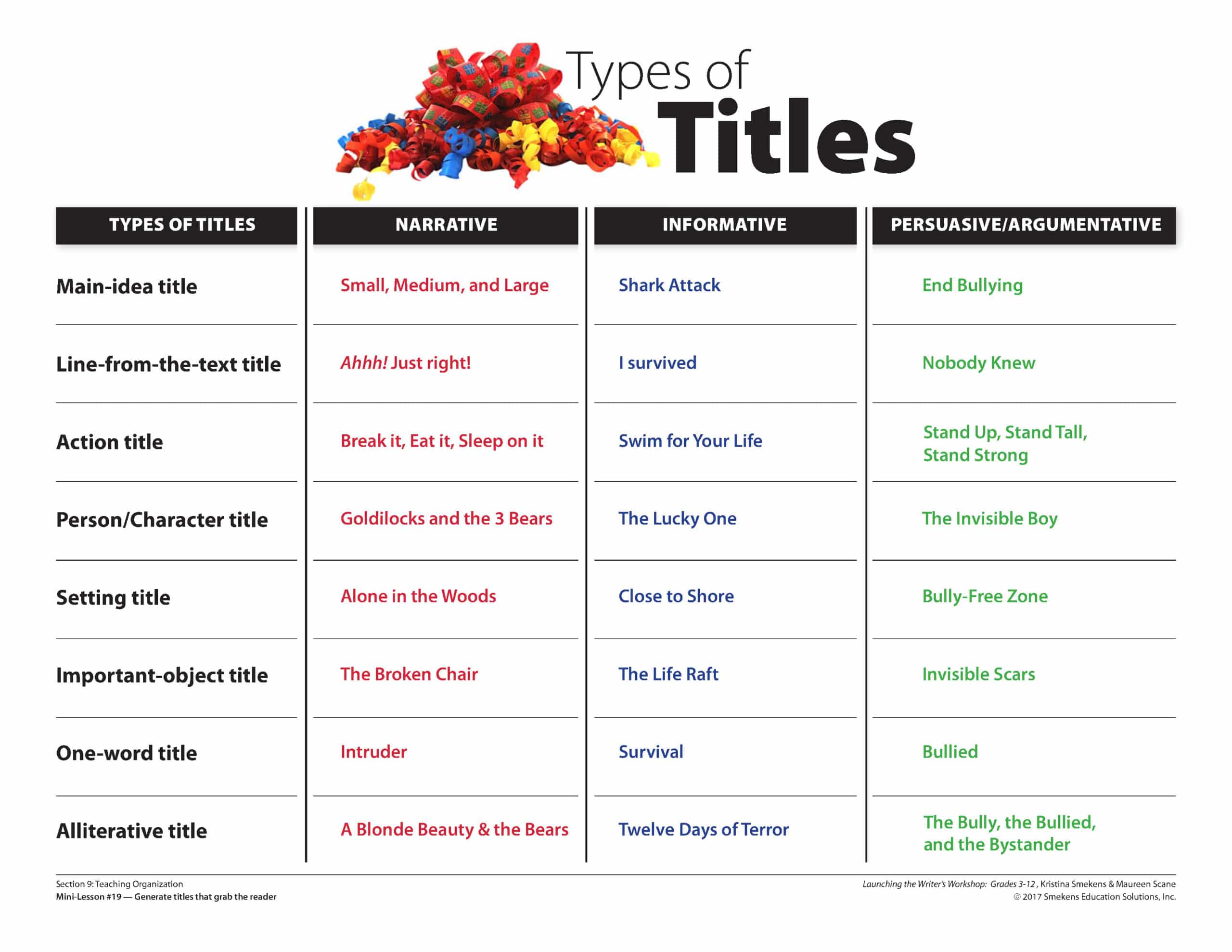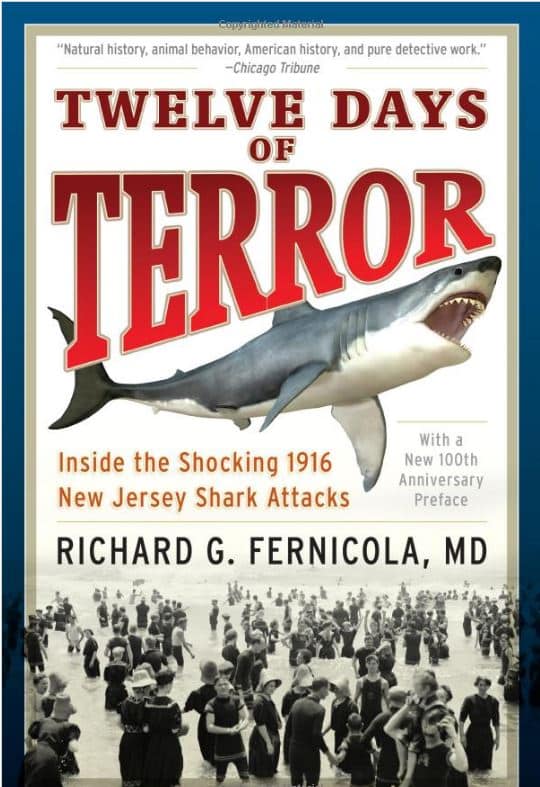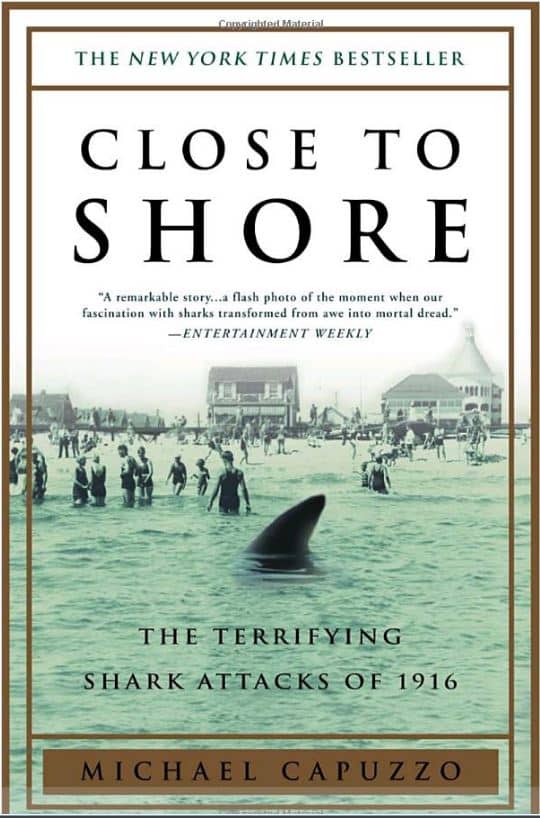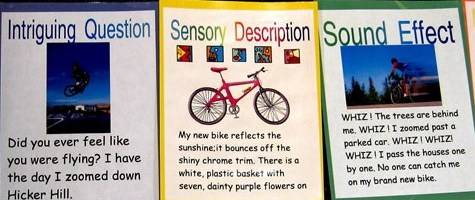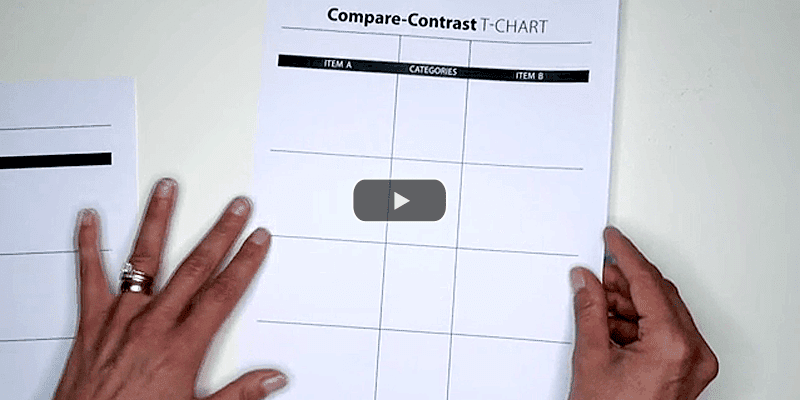Learning Center
Strengthen student titles
It may seem rather insignificant, but there is great power in teaching writers about titles. For younger writers, the title is often the first and only thing they write. Without the pressure of complete thoughts, capital letters, and punctuation marks, ALL students can put their energies toward generating a powerful and attention-grabbing title.
When introducing a mini-lesson series about writing titles, compare its impact to a bow atop a gift package. Reveal three identically wrapped boxes, each with a different topper. Invite students to consider which gift they would rather receive.
A gift without any decorative touch—no ribbon or bow—can send the message that the contents aren’t particularly valued. Similarly, a piece of writing without a title may signal a lack of care or investment in the work.
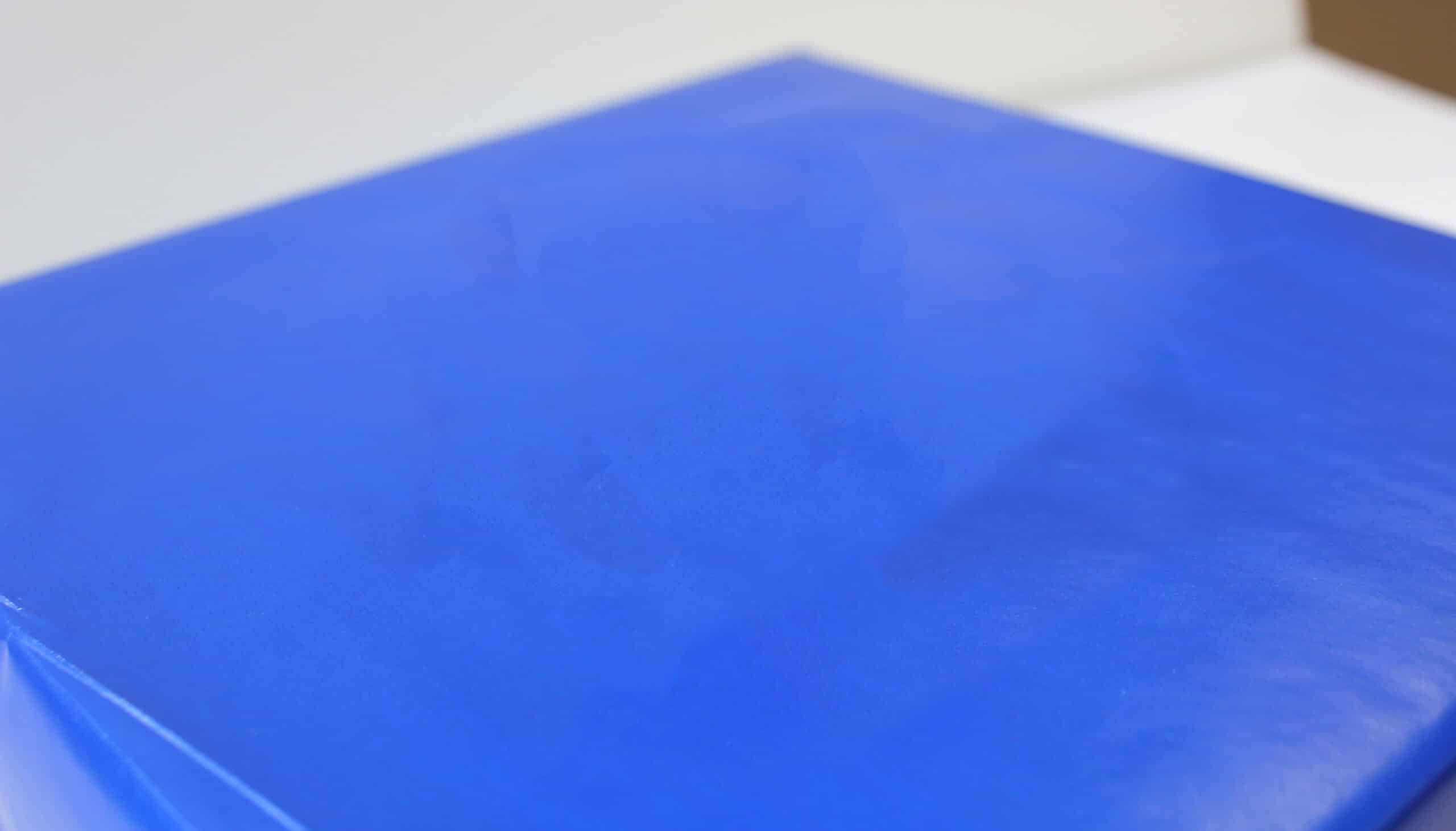
When a gift is topped with a bow that’s been reused countless times, it feels generic—just like a title that’s been used over and over by students (“Summer Vacation,” “Chapter Summary,” “Persuasive Essay,” etc.). If a title could belong to anyone’s writing, it doesn’t say much about what makes that piece special.
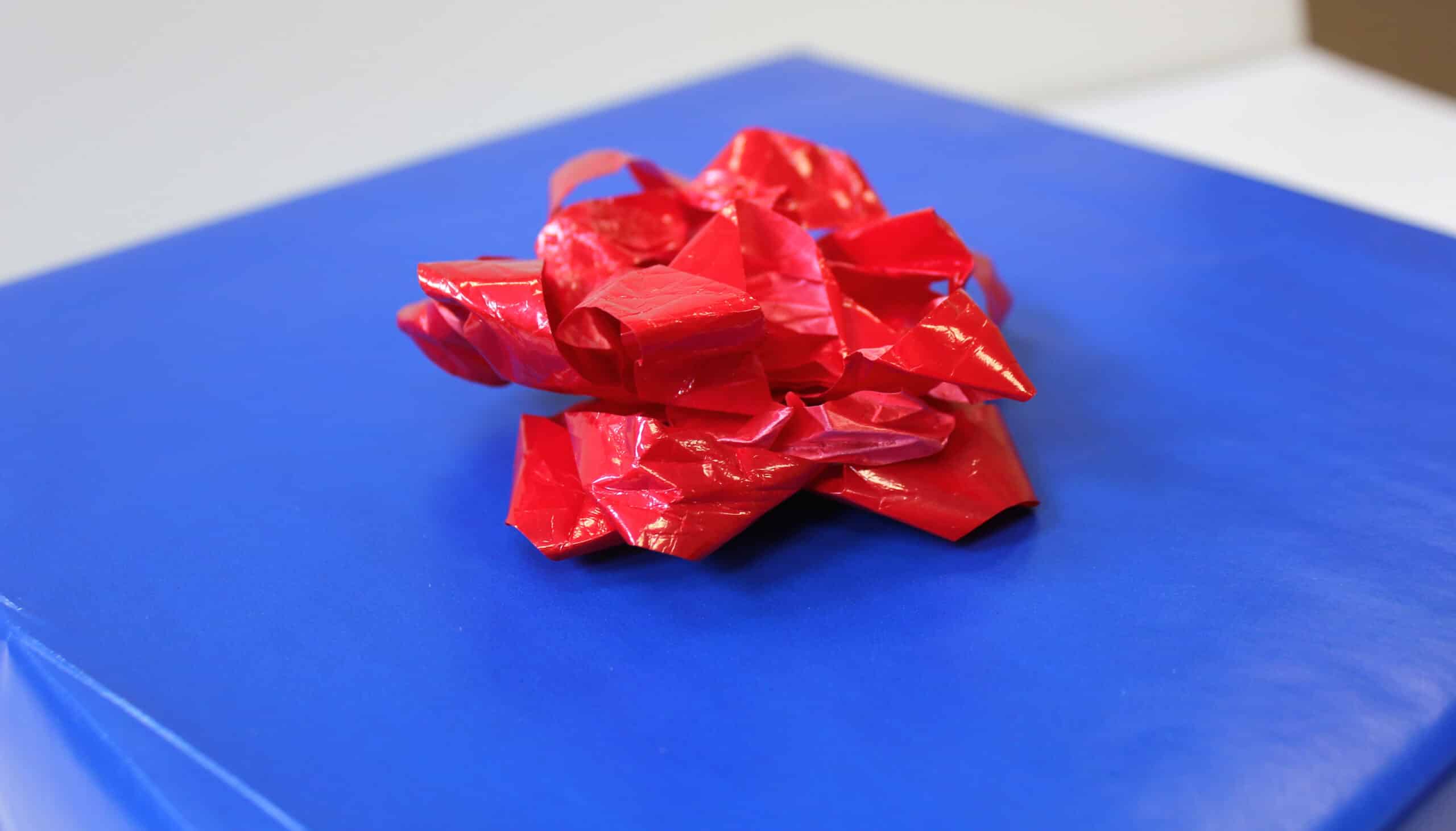
In contrast, a unique, thoughtfully chosen bow reflects the care given to both the wrapping and the gift itself. The same is true of a strong, customized title—it shows that the writer has thought carefully about his message and wants it to stand out.
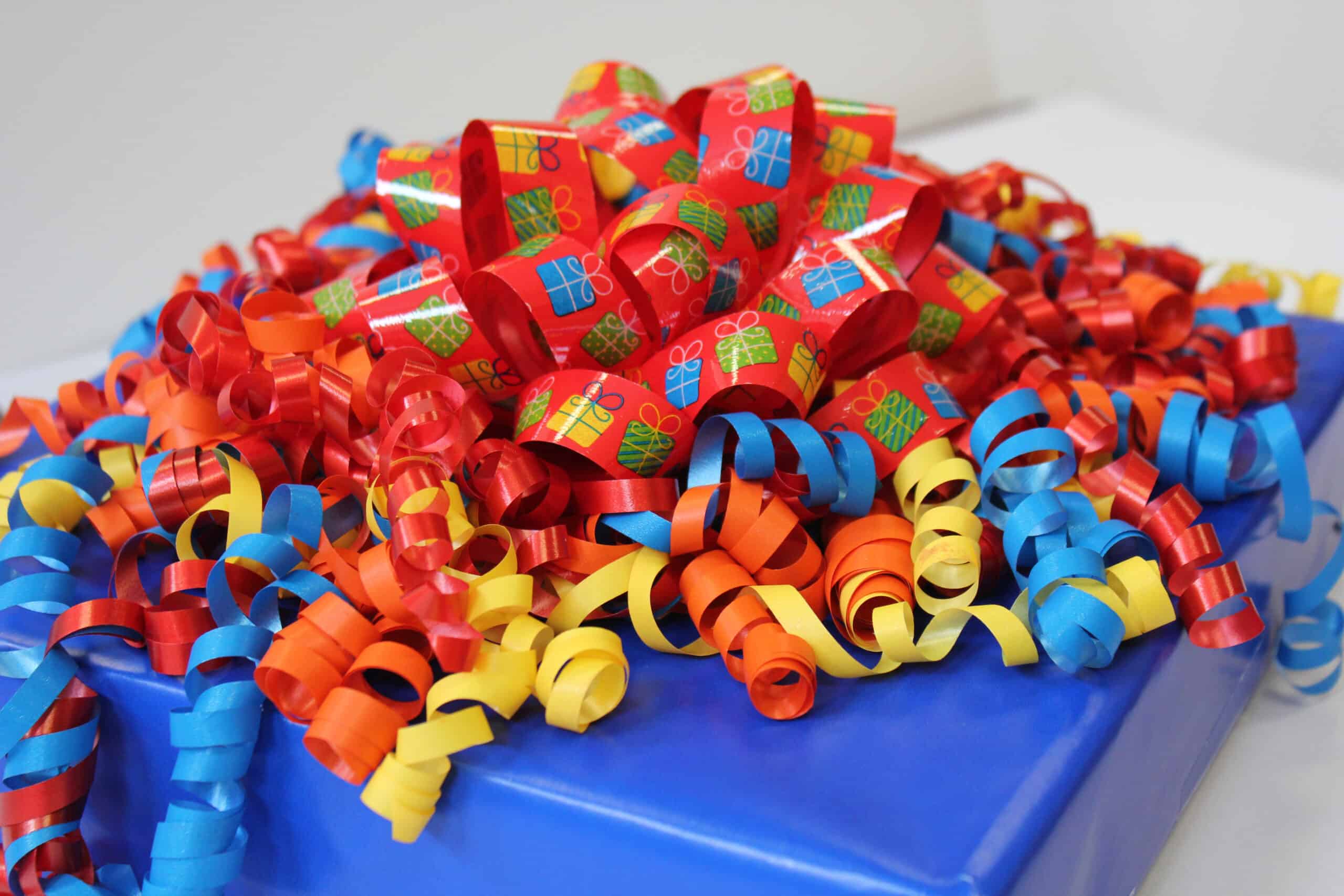
Emphasize how a title shapes a reader’s first impression—much like the bow (or lack of ribbon) is the first thing noticed on a gift. With a stronger understanding of the purpose a title serves, reveal several authentic examples all on the same topic (e.g., shark attack).
Name the categories or types of titles authors utilize. Show students how to spot these patterns by having them look through picture books. Here are a few examples.
Use the main character’s name.
- Wilfrid Gordon McDonald Partridge
- Fancy Nancy
- The Recess Queen
Repeat a specific line from the story.
Provide a one-word title.
Identify a key object or thing.
Scaffold student practice with writing titles
Before asking students to write their own titles, provide opportunities to practice with different title types. These activities help students recognize patterns and build confidence in choosing titles for their writing.
- Use pictures as prompts. Ask students to study an image and create a title to match—no draft, no story, just a title. (This idea comes from second grade teacher Jenny Vidimos at Bailly Elementary in Chesterton, IN.)
- Revisit old writing. Invite students to revisit their own writing and try out 2-3 different title options for a single piece. Have them circle their favorite and explain why it’s the strongest.
- Try alternatives for a generic title. Give students a short text with a generic title. The Kid Who Invented the Popsicle is a great source for this. Strip off the title and have students brainstorm stronger alternatives. Encourage them to create multiple options—different examples that fit each of the different types of titles. This reinforces the idea that titles deserve as much thought as the writing itself.


